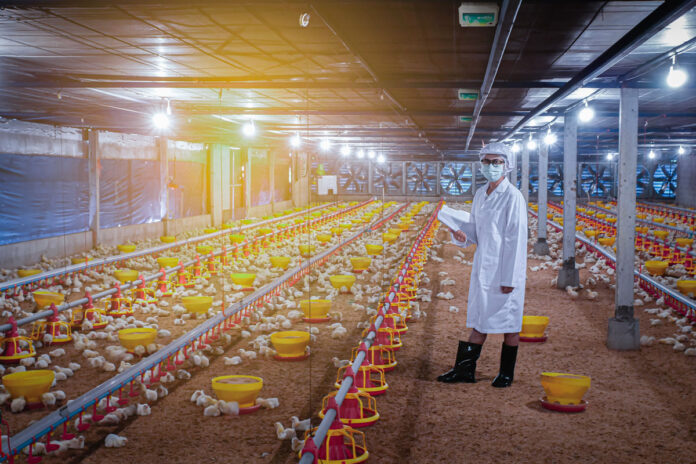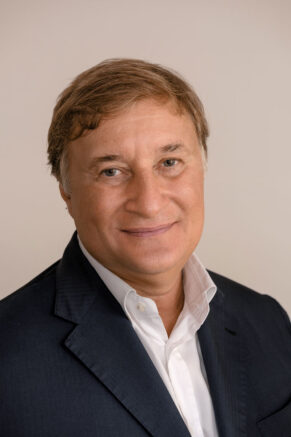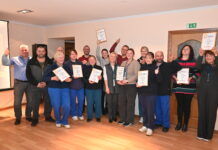
The Italian biotechnology company e4life has introduced e4life Farm – advanced devices that use electromagnetic waves to inactivate the avian influenza virus within poultry houses, achieving up to 95% efficiency. This innovative technology is also available in devices designed for human use, proven effective against seasonal influenza, RSV, and COVID-19 – including the KP3 variant. We discussed this innovative approach with CEO Vincenzo Pompa.
Elettronica, an Italian company holding a 51% stake in e4life, operates in the defence sector, specialising in the production of electronic warfare systems. How did your focus shift toward protecting against respiratory viruses?
Vincenzo Pompa – It all began during the pandemic, when a Taiwanese medical team published an article in Nature Scientific Reports, suggesting that airborne respiratory viruses could be morphologically affected by electromagnetic fields.
Since the management of electromagnetic fields is at the core of Elettronica’s expertise, we began exploring whether it was possible to go beyond the findings presented in the Nature article. This led us to develop a scientific model demonstrating that a specific power level could induce a resonance phenomenon capable of disrupting the virus. Essentially, when the virus is exposed to electromagnetic waves generated with specific parameters, it triggers a self-sustaining oscillatory motion that leads to a “resonance” phenomenon – ultimately breaking down the capsid, the virus’s outer protective shell. At this point, the spike proteins lose their stable anchoring structure and can no longer function as hooks to penetrate target cells. In this way, the virus’s pathogenicity and transmission ability are effectively suppressed.
From an engineering model to reality: what steps were taken to develop an effective device?

V.P. – Once we determined that the resonance principle could be applied for the first time to air sanitisation, we moved forward with experimentation. Elettronica collaborated with the Scientific Department of the Military Polyclinic of Rome, where the initial liquid tests were conducted, as the laboratory lacked an aerosol nebuliser. The liquid tests showed a 60% inactivation rate, a promising result considering that liquids absorb the wave energy, thereby reducing its effectiveness. Encouraged by these results, we sought a private partner to advance the research. We found one in the American pharmaceutical company ViroStatics, whose laboratories in Alghero conducted aerosol tests on COVID-19 and its variants, achieving an inactivation rate of approximately 90%. At that point, we began a process of validating the scientific rigour of the protocols used. At the University of Milan, within the Department of Biomedical and Clinical Sciences led by Prof. Biasin, we validated the process by replicating the tests conducted in Alghero. The results demonstrated 100% replicability, yielding the same inactivation values. Not satisfied with just that, we replicated the tests once more at the University of Genoa under the guidance of Prof. Alberto Izzotti, Professor of Hygiene, and achieved results that were not only consistent with the previous ones but even better. During these tests, we expanded the scope of effectiveness, first from SARS-CoV-2 to seasonal human influenza, and then to the respiratory syncytial virus (RSV).
The transition from protecting human health to safeguarding animal health was a natural and swift progression.
V.P. – With efficacy rates exceeding 95% against the human influenza virus, we expanded our focus to the animal sector, conducting tests on the avian influenza virus and the one responsible for swine fever. For both, we achieved an inactivation efficiency of over 90% (more precisely: 95% for avian, 90% for swine fever).
Following the success of e4life Human, e4life Farm was created, specifically designed for companies that raise chickens, turkeys, and pigs.
How does e4life Farm operate, and what advantages does it offer over more traditional systems?
V.P. The e4life Farm device is specially designed for poultry houses, featuring an IP65 protection rating that ensures full protection against moisture, liquids, and dust. It is designed for ceiling installation and operates efficiently at ground level. Each device covers about 50-60 sqm. The strength of the device lies in its ability to stay continuously updated. Each unit can emit different frequencies sequentially, not in parallel. This allows us, through ongoing research, to identify new frequency-power combinations effective against specific viruses, which can then be remotely uploaded to devices already in operation. This applies to devices intended for human use as well as those designed for animal use.
 Low-frequency electromagnetic waves pose no harm to either humans or animals. For instance, the e4life Personal device, designed for human wear, is both CE and SAR certified. The SAR certification is required for all electronic devices and indicates the recommended distance at which the device should be kept from the human body. Consider this: while common smartphones have a SAR of 30 cm, our device is certified with a SAR of 0 cm.
Low-frequency electromagnetic waves pose no harm to either humans or animals. For instance, the e4life Personal device, designed for human wear, is both CE and SAR certified. The SAR certification is required for all electronic devices and indicates the recommended distance at which the device should be kept from the human body. Consider this: while common smartphones have a SAR of 30 cm, our device is certified with a SAR of 0 cm.
Considering an estimated lifespan of at least 10 years, these devices consume minimal energy, contain no chemical products, and require no filters or other replaceable parts. Once installed, they operate continuously, sanitizing both the air and surfaces. While the surface sanitization effectiveness is somewhat lower, it still achieves up to 75% virus inactivation. Sanitisation is also immediate: unlike HEPA filters, which need regular replacement and extended operation to be effective, electromagnetic waves travel at the speed of light, providing instant results. Installation is straightforward: e4life Farm is suitable for any farm. After an inspection, we can strategically place the devices to maximise their effectiveness, considering factors such as any metal structures within the sheds that may affect the wave frequencies.
The One health approach seems to be a perfect fit for e4life.
V.P. – The first device was created to combat Covid, then we expanded its focus to human well-being, and ultimately, to animal welfare. When we began exploring the animal sector, we realized that focusing on this area also means indirectly safeguarding human health. We recently had a meeting with a plant pathologist from the University of Turin. Plants, too, are vulnerable to viruses, bacteria, and fungi. Fungi spread through spores, whose outer membrane could resonate similarly to that of viruses. If we could protect the plant environment within enclosed spaces like greenhouses, we would achieve comprehensive coverage across the plant, animal, and human worlds, reaching the goal of holistic well-being.
In developing cutting-edge health prevention solutions, you are backed by an Advisory Board composed of esteemed scholars.
V.P. – The company’s credibility is reinforced not only by scientific articles and reports – such as the technology’s inclusion in indoor sanitation practices published by the ISS and its positive evaluation in the latest report from the Joint Research Centre (JRC) of the European Commission, which provides scientific support to the EU in shaping future guidelines to enhance quality of life – but also by its prestigious scientific Advisory Board. It includes Prof. Silvio Brusaferro, Professor at the Department of Medicine at the University of Udine and former president of the Italian National Health Institute, and Prof. Gaetano Privitera, Professor Emeritus of Hygiene at the University of Pisa and expert in national and international organizations. Both play a pivotal role in guiding scientific research, identifying emerging technological advancements, and proposing innovations in health prevention.
What are your plans for the future?
V.P. – We are currently facing some very important challenges. One example is swine fever: we are working with the Institute of Experimental Zootechnics in Perugia, the only facility in Italy that handles the ASF virus, where we have already conducted tests in both liquid and aerosol forms. If the results, expected by the end of March, show that electromagnetic waves are effective against swine fever, it would provide a significant tool in helping to contain the outbreak.
Another challenge focuses on bacteria: in collaboration with Prof. Andrea Piana of the University of Sassari, we have already conducted tests in both liquid and aerosol forms, and have now moved on to surface testing, achieving excellent results. The next step is to fine-tune the frequency-power combination. So far, we’ve tested the devices at maximum power in the lab, which isn’t suitable for human presence. Therefore, we need to gradually reduce the power to identify the optimal balance between efficacy, power levels, and safe coexistence with humans and animals.
Finally, an even greater challenge lies ahead: exploring the potential effectiveness of electromagnetic waves against tuberculosis, a disease that still affects a third of the global population.
















